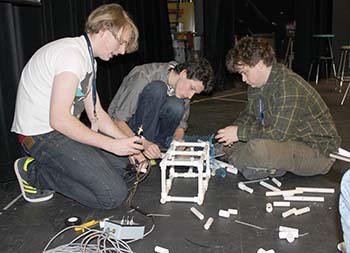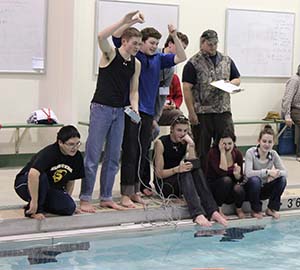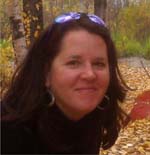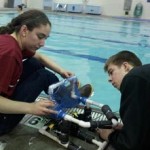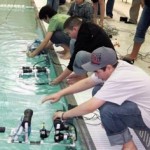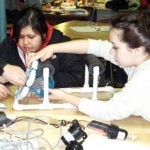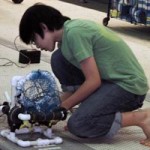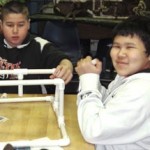By JESSICA RYAN
Kachemak Bay Research Reserve
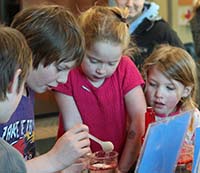
Fifth and sixth grade students from Fireweed Academy, a charter school in Homer, created the first ever student-led public Discovery Lab program on the topic of the Exxon Valdez oil spill, titled “25 Years After the Spill”.
Fireweed Academy students are known to engage in the old adage “learn by doing.” The students learned about the effects the Exxon Valdez oil spill by researching the history of the spill and its subsequent impacts to Alaska’s wildlife and human communities. Kachemak Bay Research Reserve educator Catie Bursch and Fireweed Academy principal/teacher Kiki Abrahamson, and teacher Kris Owens guided the students.
Bursch, Abrahamson and Owens encouraged students to interview their parents and others who lived through the spill, and to use the web to find information about the lasting impacts of the spill. The students then developed written content, activities and games to convey this information to the public; advertised the event; and presented the information at the public Discovery Lab on February 5.
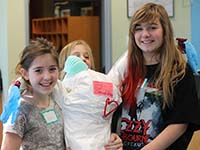
Students posted flyers and notified parents and friends. They set a goal to have the highest attendance ever at a winter Discovery Lab. The public responded with enthusiasm, and on the day of the event the Discovery Lab classroom at the Islands and Ocean Visitor Center was buzzing with participants. 125 visitors walked in the door in addition to the 24 students, setting a new winter attendance record!
In preparation for the big event, students set up and ran through the lab with 60 Fireweed Academy students in grades 3 and 4 at their school. The colorful, hands-on displays included:
- Demonstrations of oil dispersal and cleanup methods
- A life-sized oil spill worker with appropriate safety gear and symptoms of what could happen if the gear wasn’t used
- A wildlife recovery matching game
- Information about different kinds of oil and oil dispersants.
To test student comprehension, Research Reserve education coordinator Jessica Ryan conducted a six-question pre-test in November, before students began this project, and a post-test with the same six questions at the conclusion of the February program. The improvement in test scores was dramatic. Before the event, only half of the students could even name the vessel that caused the spill. By the conclusion of the lab, all of the students knew not only that the Exxon Valdez had caused the spill, but the date of the spill, how much oil was spilled, and the type of oil spilled. Students learned not only about effects of the Exxon Valdez oil spill through their development of the lab activities, but they also focused on improvements to spill prevention and response since that time through activities that taught about double-hulled tankers systems and bioremediation.
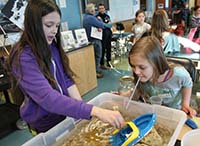
Fireweed’s Abrahamson felt that this opportunity for students to develop and present their own Discovery Lab program was a worthwhile use of their time and dove-tailed nicely with several of their curriculum goals.
Research Reserve oversight of partnership between the Reserve and the school was made possible thanks to funding support provided by the Prince William Sound Regional Citizens’ Advisory Council.
